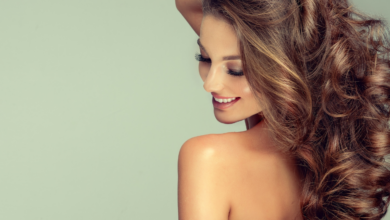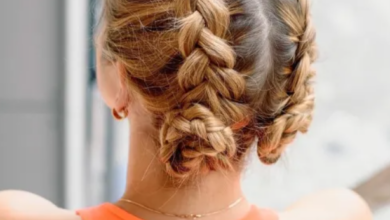
If you’ve ever dreamed of achieving sleek, straight hair that looks effortlessly chic, then look no further! In this article, you’ll discover expert tips and tricks by the style gurus at stylish.ae to help you achieve the hairstyle of your dreams. Whether you have naturally curly hair or just want to switch up your look, these tips will guide you towards silky smooth locks that are the epitome of sophistication. Say goodbye to frizz and hello to a sleek, straight hair look that will turn heads wherever you go. It’s time to take your hair game to the next level with the help of these expert tips from stylish.ae.
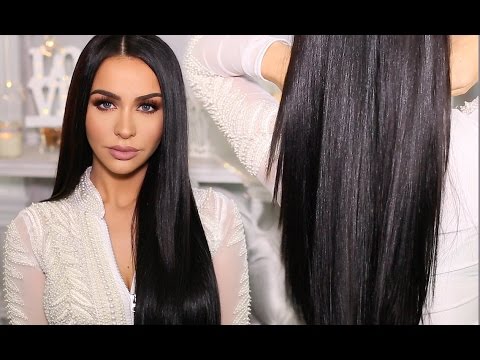
Choosing the Right Products
When it comes to achieving sleek, straight hair, choosing the right products is essential. Understanding your hair type plays a significant role in determining which products will work best for you. Whether you have fine, thick, curly, or chemically treated hair, there are specific formulas designed to cater to the needs of each hair type. By selecting the right shampoo and conditioner, applying heat protectant, and using the appropriate straightening tools, you can transform your locks to achieve the desired look.
Understanding Your Hair Type
Before delving into the world of hair products and styling techniques, it’s crucial to understand your hair type. Each hair type requires different care and attention. Fine hair tends to be more delicate and prone to damage, while thick or curly hair can be more resistant to heat and styling. Chemically treated hair may need extra care and protection to maintain its straightened look. By identifying your hair type, you can narrow down the products and techniques that will work best for you.
Using the Right Shampoo and Conditioner
Once you know your hair type, it’s vital to choose a shampoo and conditioner suited for your specific needs. Look for products that are designed to promote straightness and reduce frizz. These formulas often contain ingredients like keratin or argan oil, which help to smooth and nourish the hair. Avoid using products that are too heavy or moisturizing, as they can weigh down your locks and make them appear greasy. Opt for lightweight options that provide the right balance of hydration and control.

Applying Heat Protectant
Before subjecting your hair to heat styling tools, always remember to apply a heat protectant. This step is crucial in preventing damage caused by excessive heat. Heat protectants work by creating a barrier between your hair and the hot tools, reducing the risk of breakage and dryness. Look for products that offer thermal protection and also moisturize your hair. Spray the heat protectant evenly throughout your locks, ensuring that every strand is coated. This simple step can go a long way in safeguarding the health and integrity of your hair.
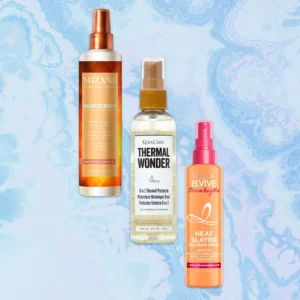
Selecting the Right Straightening Tools
Investing in the right straightening tools will make a noticeable difference in achieving sleek, straight hair. Ceramic straighteners are a popular choice as they distribute heat evenly and provide a smooth glide over the hair. Tourmaline straighteners, on the other hand, generate negative ions that help to seal the hair cuticles, leaving the hair smoother and shinier. Ionic straighteners emit negative ions and reduce static, minimizing frizz and leaving the hair sleek and manageable. Choose a straightening tool that suits your preferences and budget, and always opt for one that allows you to control the temperature settings.
Preparing Your Hair
Before diving into the straightening process, it’s essential to prepare your hair properly. This involves washing and drying your hair, detangling it, and applying a serum or argan oil to provide extra moisture and smoothness.
Washing and Drying Your Hair
Start by washing your hair with a shampoo and conditioner specifically formulated for straight hair. Gently massage the products into your scalp, working the lather through to the ends of your hair. Rinse thoroughly to ensure all product residue is removed. After washing, gently squeeze out the excess water from your hair and wrap it in a microfiber towel or an old t-shirt to minimize damage. Avoid rubbing your hair vigorously with a regular towel, as this can cause frizz and breakage.
Next, dry your hair using a blow dryer on a low or medium heat setting. Avoid using high heat as it can damage your hair. For added volume, flip your head over and dry your hair upside down, lifting the roots with your fingers. Once your hair is mostly dry, you can proceed to detangle it.
Detangling Your Hair
Using a wide-tooth comb or a detangling brush, gently start detangling your hair from the ends and work your way up towards the roots. This method prevents breakage and minimizes pain or discomfort. Start by dividing your hair into sections and focus on one section at a time. Be patient and gentle, especially if you have thick or curly hair. Detangling your hair will make the straightening process much easier and ensure that your hair looks sleek and tangle-free.
Applying Serum or Argan Oil
To provide your hair with extra moisture and smoothness, apply a serum or argan oil after detangling. These products act as a barrier against humidity and frizz, adding shine and a polished finish to your straight hair. Start by applying a small amount of serum or oil to the ends of your hair, working your way up towards the roots. Avoid applying too much product, as this can weigh down your hair and make it appear greasy. Focus on the mid-lengths and ends, where hair tends to be drier and more prone to damage.
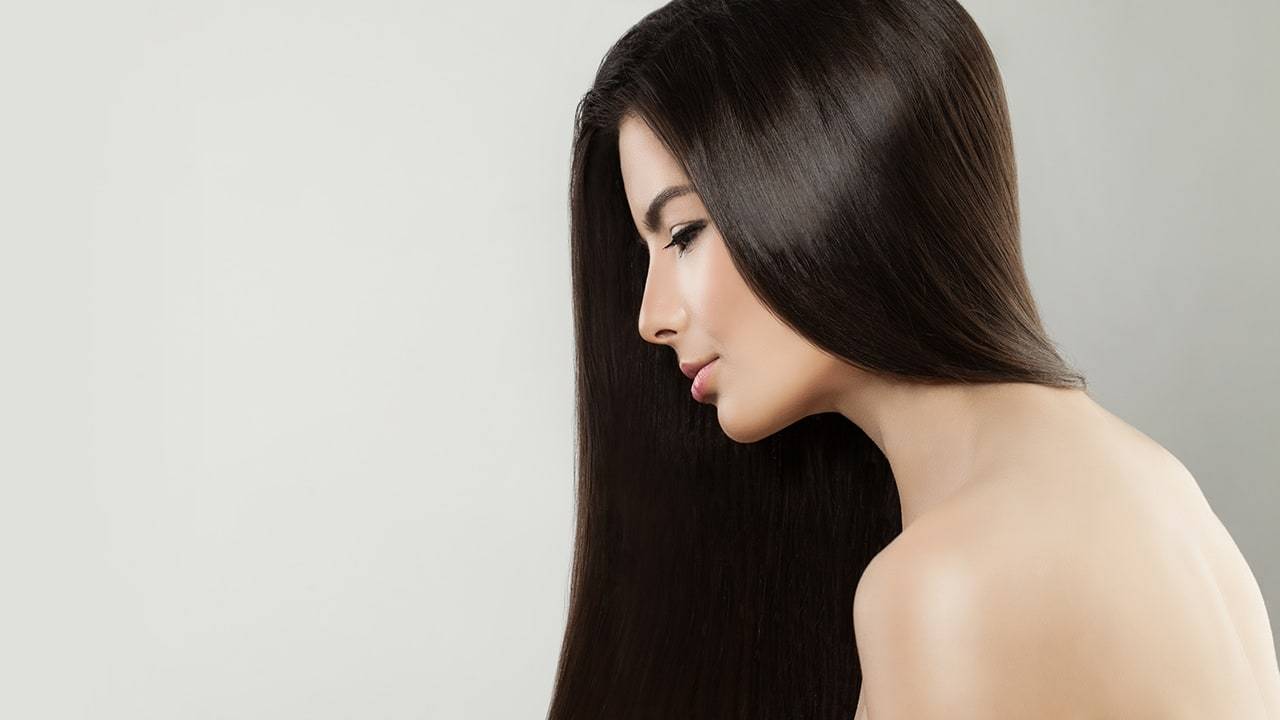
Sectioning and Clipping
To achieve perfectly straight hair, sectioning and clipping your hair is essential. This technique ensures that each section is straightened thoroughly, leaving you with a polished and uniform look.
Dividing Your Hair into Sections
Start by dividing your hair into manageable sections. Begin by parting your hair down the middle, creating two equal sections. Then, take each section and divide it in half, creating four sections in total. This method allows you to work on smaller sections at a time, ensuring that each strand is straightened evenly. Use hair clips to keep the sections separated and out of the way while you work on each one.
Clipping the Hair Up
Once you have divided your hair into sections, it’s time to clip each section up. Start with the bottom section and use a hair clip to secure the rest of your hair out of the way. This prevents tangling and ensures that you have a clear working area. As you move on to each section, unclip the hair and secure it back up after straightening. This method makes the straightening process more organized and efficient, allowing you to focus on each section without the interference of other strands.
Using Sectioning Clips
In addition to hair clips, sectioning clips can be extremely helpful in keeping your hair organized. These clips are designed to hold small sections of hair securely, preventing them from falling out of place while you work on other sections. Sectioning clips are particularly useful for those with thick or long hair, as they ensure that no strand is left behind during the straightening process. Simply clip a small section of hair, and it will stay in place until you are ready to work on it.

Straightening Techniques
Achieving perfectly straight hair requires mastering the right straightening techniques. From choosing the right temperature to using downward motion and utilizing a brush or comb, these techniques will help you achieve a salon-worthy straight look.
Choosing the Right Temperature
When straightening your hair, it’s important to choose the right temperature setting on your straightening tool. Fine or damaged hair should be straightened at a lower temperature to minimize the risk of heat damage. Thicker or more resistant hair might require a higher temperature for effective straightening. Start with a lower temperature and gradually increase it if necessary. It’s always better to err on the side of caution and avoid subjecting your hair to excessive heat, as this can cause dryness, breakage, and other forms of damage.
Starting from the Roots
To ensure that your hair is straightened from root to tip, start close to the roots and slowly glide the straightening tool down towards the ends. Use a comb or brush to guide the tool, ensuring that each strand is straightened evenly. Starting from the roots prevents any kinks or waves from forming at the top of your hair, giving you a smooth and sleek result. Take your time while straightening each section, and avoid rushing through the process. Patience and attention to detail will pay off with perfectly straight hair.
Using Downward Motion
As you glide the straightening tool down your hair, make sure to use a downward motion. This technique helps to smooth out the hair cuticles and create a sleek and straight effect. Avoid pulling or tugging on your hair, as this can cause breakage and damage. Instead, use consistent and gentle pressure while moving the tool downwards. By maintaining a fluid downward motion, you will achieve straight hair without compromising its health and integrity.
Using a Brush or Comb
While straightening your hair, using a brush or comb alongside the straightening tool can help in achieving optimal results. Choose a brush or comb with widely spaced bristles, as these are more effective in detangling and straightening the hair. Start by combing through a section of hair with the brush or comb, ensuring that it’s smooth and free of knots. Then, follow with the straightening tool, gliding it through the section as you would normally. The brush or comb helps to guide the tool and ensure that each strand is straightened from root to tip.

Maintaining the Straight Look
Once you have achieved sleek, straight hair, it’s important to maintain the look throughout the day. Using a hairspray or finishing product, avoiding humidity and frizz, and refraining from touching your hair too much are key aspects of maintaining your straightened locks.
Using a Hairspray or Finishing Product
To keep your straight hair in place and prevent flyaways, use a hairspray or finishing product. Choose a lightweight formula that provides hold without making your hair stiff or sticky. Spray the product lightly over your hair, keeping a distance to ensure an even distribution. Avoid spraying too close to the roots, as this can weigh down your hair and lead to oiliness. A hairspray or finishing product will help to lock in your straightened style and keep it looking sleek and polished.
Avoiding Humidity and Frizz
Humidity can be your worst enemy when it comes to maintaining straight hair. To combat frizz and preserve the sleekness of your locks, avoid exposing your hair to excessive humidity. If you’re in a humid environment, consider using an umbrella or a hat to shield your hair from moisture. Additionally, consider using a humidity-resistant hair spray or serum before leaving the house. These products create a barrier against humidity and help to maintain your straight hair throughout the day.

Avoiding Touching Your Hair Too Much
While it may be tempting to run your fingers through your straightened locks, it’s essential to avoid touching your hair too much. Excessive touching can transfer oils from your scalp to your hair, making it greasy and losing its straightness. Furthermore, constant touching can also disrupt the straightened style and introduce frizz. If you need to adjust your hair or fix any stray strands, use a mirror and a small comb or brush to do so. Minimizing contact with your hair will help it stay straight and sleek for longer periods.
Tips for Different Hair Types
Different hair types require different approaches when it comes to straightening. Understanding how to adapt your straightening routine according to your specific hair type will ensure the best results.
Straightening Fine Hair
When straightening fine hair, it’s important to be more cautious and gentle. Fine hair is more susceptible to damage, so using lower heat settings and shorter straightening strokes is essential. Choose a straightening tool with adjustable temperature settings and start with the lowest setting. As you straighten your fine hair, glide the tool through smaller sections, taking your time to ensure that each strand is straightened adequately. Using a heat protectant specifically formulated for fine hair will also help to minimize damage and maintain the health of your locks.
Straightening Thick or Curly Hair
Thicker or curly hair tends to be more resistant to straightening, requiring higher heat settings and more passes with the straightening tool. Start by using a higher temperature setting, but be cautious not to exceed the maximum recommended temperature for your hair type. Divide your thick or curly hair into smaller sections and focus on straightening one section at a time. Take your time and make multiple passes with the straightening tool to ensure that each section is thoroughly straightened. Applying a smoothing serum or oil before straightening can also help in achieving a sleek and polished finish.
Straightening Chemically Treated Hair
Chemically treated hair, such as hair that has been relaxed, permed, or colored, requires extra care and attention during the straightening process. These hair types are more vulnerable to damage, so it’s crucial to use lower heat settings and limit the frequency of straightening. Choose a straightening tool with adjustable temperature settings and start with the lowest temperature. Gradually increase the heat if necessary, but never exceed the recommended maximum temperature for chemically treated hair. Apply a heat protectant specifically formulated for chemically treated hair before straightening, and take breaks between straightening sessions to allow your hair to recover.
Avoiding Heat Damage
The repeated use of heat styling tools can lead to heat damage, causing dryness, breakage, and overall hair damage. To minimize the risk of heat damage, it’s important to take precautions and adopt healthy hair practices.
Using Heat Protectant
One of the most effective ways to avoid heat damage is by using a heat protectant before subjecting your hair to heat styling tools. Heat protectants create a barrier between the hot tool and your hair, reducing the direct impact of heat. Look for heat protectants that offer thermal protection and moisturizing benefits. Apply the heat protectant evenly throughout your hair, ensuring that every strand is coated. Be generous with the product, especially if you have long or thick hair. Using a heat protectant is a simple yet vital step in safeguarding the health of your hair.
Adjusting Heat Settings
When using heat styling tools, always be mindful of the temperature settings and choose the appropriate heat level for your hair type. Start with a lower temperature and gradually increase it if necessary. Fine or damaged hair typically requires lower temperatures, while thicker or more resistant hair may need higher temperatures for effective straightening. Pay attention to how your hair reacts to the heat and adjust accordingly. Remember that it’s always better to err on the side of caution and avoid subjecting your hair to excessive heat, as it can cause irreparable damage.
Avoiding Frequent Straightening
As tempting as it may be to straighten your hair every day, it’s important to give your hair a break from heat styling. The repeated use of heat can strip the hair of its natural moisture and lead to dryness, breakage, and loss of shine. Aim to straighten your hair no more than two to three times a week, allowing your hair to recover and retain its natural health. On days when you’re not straightening, embrace your natural texture and opt for heatless styling techniques or low-manipulation hairstyles. Giving your hair a break from heat will significantly reduce the risk of heat damage and promote overall hair health.
Professional Styling Tools
Investing in professional styling tools can make a significant difference in achieving salon-worthy results. Ceramic straighteners, tourmaline straighteners, and ionic straighteners are popular options among professionals.
Ceramic Straighteners
Ceramic straighteners are a staple in the world of hair styling. These straighteners are designed with ceramic plates that distribute heat evenly, ensuring that each strand is straightened consistently. The smooth surface of ceramic plates also allows for a frictionless glide through the hair, reducing the risk of breakage and damage. Ceramic straighteners are suitable for all hair types and provide excellent results when used correctly.

Tourmaline Straighteners
Tourmaline straighteners are another popular choice due to their unique properties. These straighteners are crafted with tourmaline-infused ceramic plates, which emit negative ions when heated. These negative ions help to seal the hair cuticles, resulting in smoother and shinier hair. Tourmaline straighteners are particularly beneficial for those with frizzy or brittle hair, as they help to reduce frizz and increase hair manageability. The negative ions also help to balance out the positive ions present in dry or damaged hair, restoring moisture and vitality.

Ionic Straighteners
Ionic straighteners are designed with specialized plates that emit negative ions. These negative ions counteract the positive ions present in the hair, reducing frizz and static. Ionic straighteners are effective in taming unruly hair, especially for those with thick or curly locks. The negative ions also promote hair health by sealing the hair cuticles and minimizing damage caused by heat or styling. Ionic straighteners are a favorite among professionals and provide impressive results when used properly.

Alternative Straightening Methods
If you’re looking for alternative ways to achieve straight hair without relying solely on heat styling tools, there are a few methods worth exploring. Using a hair mask and blow dryer, utilizing a straightening comb, or trying a steam straightener can all provide different ways to achieve straight locks.
Using a Hair Mask and Blow Dryer
Using a hair mask in conjunction with a blow dryer can help to achieve temporary straightness without the need for a straightening tool. Start by applying a generous amount of hair mask to clean, damp hair. Distribute the product evenly, focusing on the mid-lengths and ends. Then, blow dry your hair using a round brush, focusing on smoothing and straightening the hair as you dry. This method helps to reduce frizz and adds temporary straightness to your locks. Keep in mind that the effects won’t last as long as traditional straightening methods, but it can be a helpful alternative for those looking for a temporary straightened look.
Using a Straightening Comb
If you prefer a heatless option, using a straightening comb can be an effective method for achieving straight hair. Start by applying a heat protectant to your hair to minimize damage. Then, using a straightening comb, slowly comb through small sections of your hair, beginning close to the roots and working your way down to the ends. Be patient and thorough, making sure to comb through each section multiple times to achieve the desired straightness. This method works best on hair that is naturally straight or slightly wavy, and it may require additional styling products to enhance the straightened effect.

Using a Steam Straightener
For those looking for a more advanced alternative straightening method, a steam straightener can be a game-changer. Steam straighteners use a combination of steam and heat to straighten the hair effectively. The steam helps to open up the hair cuticles, allowing the heat to penetrate more deeply and straighten the hair from within. This method is often less damaging to the hair compared to traditional straighteners, as the steam adds moisture and reduces the risk of dryness and breakage. Steam straighteners are particularly beneficial for those with thick or curly hair, as they provide intense heat and moisture to transform the hair into a sleek and straight style.
Preventing Hair Damage
Maintaining the health and integrity of your hair should always be a priority, even when striving for a sleek, straight look. Regular trimming, deep conditioning, and avoiding excessive heat usage are crucial in preventing hair damage.
Regular Trimming
To prevent split ends and maintain the overall health of your hair, regular trimming is essential. Even if you’re aiming for long, straight locks, it’s important to schedule regular trims every 8-12 weeks. Trimming helps to remove any damaged or split ends, preventing them from traveling up the hair shaft and causing further damage. By keeping your hair ends healthy and free from split ends, you’ll notice that your hair appears smoother and more polished, making it easier to achieve the sleek, straight look you desire.
Deep Conditioning
Deep conditioning treatments are an excellent way to nourish and hydrate your hair, especially if you frequently straighten it. Investing in a high-quality deep conditioning mask or treatment can provide your hair with the moisture and nutrients it needs to stay healthy and lustrous. Apply the deep conditioning mask to your hair once every week or two, focusing on the mid-lengths and ends where the hair is often drier and more susceptible to damage. Leave the treatment on for the recommended time, allowing the ingredients to penetrate and rejuvenate your hair. Deep conditioning treatments will help to replenish moisture, repair damage, and prevent dryness and breakage.

Avoiding Overuse of Heat
Overusing heat styling tools can cause significant damage to your hair, compromising its health and appearance. To prevent heat damage, it’s important to avoid excessive use of heat styling tools. Limit straightening sessions to two to three times a week, allowing your hair to rest and recover in between. On days when you’re not straightening, embrace your natural texture and try heatless styling techniques or low-manipulation hairstyles. By giving your hair a break from heat, you’ll notice improvements in its overall health, smoothness, and shine. Remember that heat should be used sparingly and responsibly to maintain the integrity of your hair.
In conclusion, achieving sleek, straight hair requires a combination of the right products, careful preparation, effective techniques, and proper maintenance. By understanding your hair type, using the appropriate shampoo and conditioner, applying heat protectant, and selecting the right straightening tools, you can achieve the desired look. Properly preparing your hair through washing, drying, detangling, and applying serum or argan oil sets the foundation for a successful straightening process.
Sectioning and clipping your hair allows for a systematic and thorough straightening technique, while selecting the right temperature, starting from the roots, using downward motion, and utilizing a brush or comb ensures a polished result. To maintain the straight look, using a hairspray or finishing product, avoiding humidity and frizz, and refraining from touching your hair too much are necessary.
Tailoring the straightening routine to your specific hair type and avoiding heat damage through the use of heat protectant, adjusting heat settings, and reducing frequent straightening sessions are crucial. Exploring professional styling tools, alternative straightening methods, and preventive measures like regular trimming, deep conditioning, and avoiding overuse of heat can help you achieve and maintain beautiful straight hair while minimizing damage and promoting overall hair health.
The Top Hair Styling Tools Every Dubai Woman Needs | Stylish.ae(Opens in a new browser tab)
Ogx Ever Straightening+ Brazilian Keratin Therapy Shampoo Review(Opens in a new browser tab)
Ogx Shampoo And Conditioner Review(Opens in a new browser tab)



